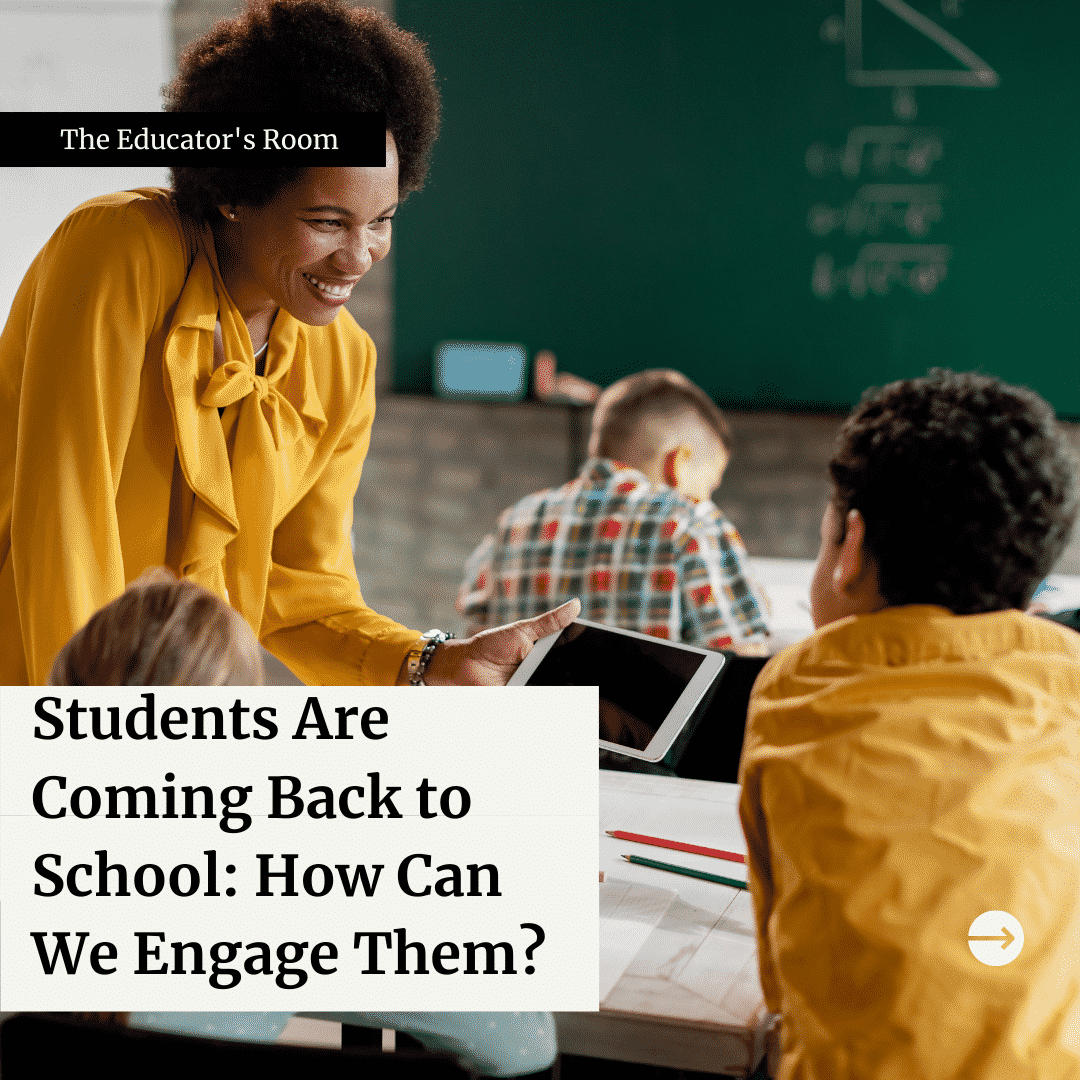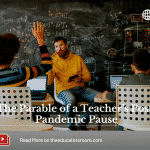Back to School: I saw online that hand sanitizer is 70% off at Target, which seems akin to a groundhog poking its head above the soil to marvel at Spring’s arrival. What’s the significance of discounts at Target? Well, a discount on hand sanitizer is symbolic of the pandemic nearing an end. Vaccines were so widely distributed in America that reports show that over 100,000 vaccines were wasted.
The CDC even relaxed guidelines a bit, right in time for the summer. As time passes, some of the precautions and engagement strategies used in classrooms will likely become distant memories. I cannot wait until the day when I can leave my mask at home without worry.
As the school year comes to an end, we should all be mindful of engagement strategies that we should carry forward, even as the pandemic wanes. Even during this tumultuous school year, we celebrated some wins in the classroom. Those wins were largely due to engagement strategies and intentionally employing them.
Here are three engagement strategies that I had success with, while other strategies crashed and burned.
Have Tough Conversations During Back to School
As an English Teacher, I often tap into the mind, hearts, and passions of students through conversation. No knock to Science and Math teachers, but English is a subject that begs, “what do you think?” One shortcoming of teaching ELA is that sometimes there isn’t a right or wrong answer, but rather a multitude of perspectives and angles to view an issue or question.
My goal is not to teach rote knowledge like dates and people but to teach students to be critical thinkers capable of seeing the world through various lenses. One way I achieve this goal is by talking to students or moderating conversations on tough topics. That’s not to say that I spur each class to debate and stir frustration among students.
However, sometimes discussing tough topics cannot be avoided. When looking at a text that features race issues, I would be remiss if I didn’t invite students to look at the world around them to view the cultural overlap between America and the world the fictional characters inhabit. When the discussion on racism in America started in class, the ringing notifying me of students raising their hands in Google Meet was incessant.
My role at this point was only to remind students that all voices matter, even those you disagree with. I also kept a running list of whose turn it was to speak so that students’ voices were honored. Throughout the school year, we had various conversations concerning protests last summer, issues concerning the LGBTQ+ community, and a plethora of other issues. Giving students a stage to voice their opinion while grappling with opposing views from their peers is an awesome way to avoid awkward, deafening silence in class.
Game it Out During Back to School
This may seem like a super obvious engagement strategy but hear me out. All too often, we create a Kahoot or Blooket and leave the students to it. Instead of just clicking buttons and listening to the student’s chatter, in between questions, be sure to ask students why they selected their specific answer.
Using this method, students can learn from each other while offering insight in a way that even you may struggle to articulate. Checking in with students in between questions affords them the ability to be an authority on certain topics. If you select a game that does not offer the option to review questions in between rounds, be sure to rely on students’ expertise during the review. Let them lead the discussion on the various topics rather than talking for 3-5 mins per question.
Break Please
Do you incorporate brain breaks into your lessons? A brain break is a short period where you allow students to have a 2-3 mins break in between teaching. These breaks offer a wealth of benefits to students. While teaching virtually, I relied on these moments to check in with students, tell a joke, allow a student to show a video, or play a quick game against a student like Tic-tac-Toe or Connect Four.
Taking a moment during brain breaks to show that you care about students by offering relief from the world of academia goes a long way. I observed that students are usually more apt to share, participate or ask questions once they feel that you care about them beyond school. Utilizing brain breaks efficiently could help your students unwind a bit all while strengthening relationships within your class community.
I hope these strategies were helpful! Please share your favorite pandemic-friendly engagement strategy below!






